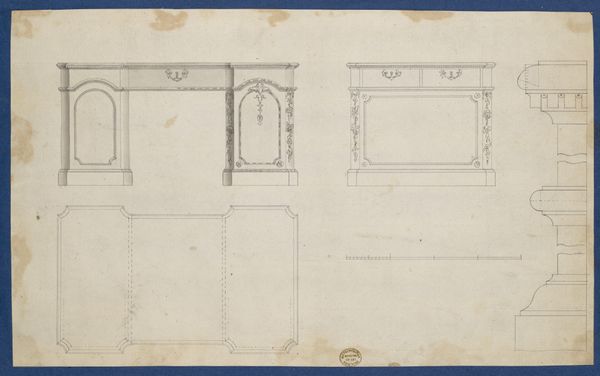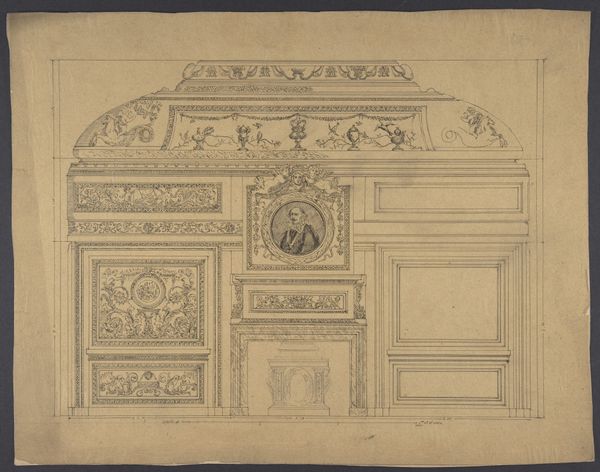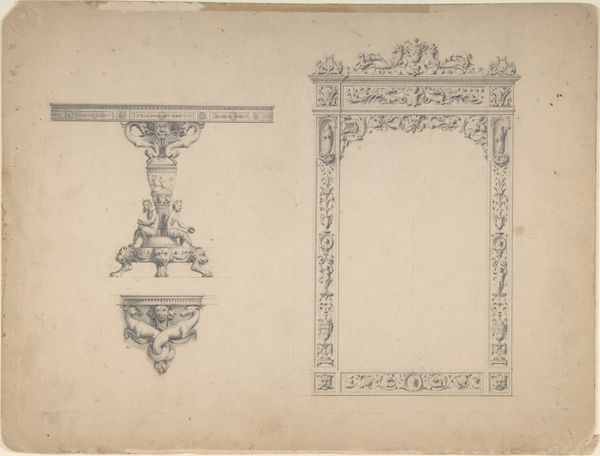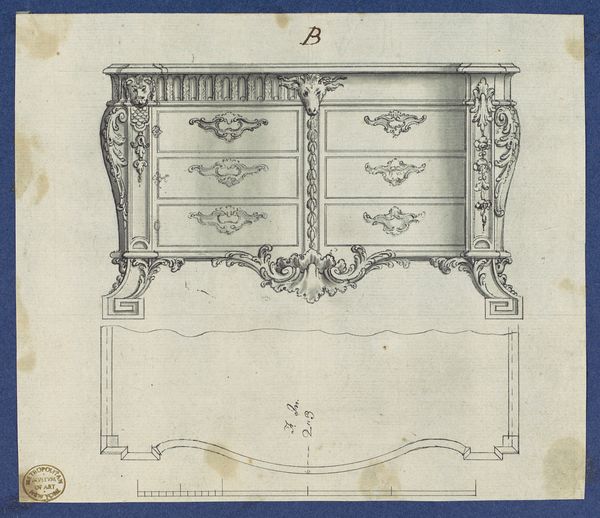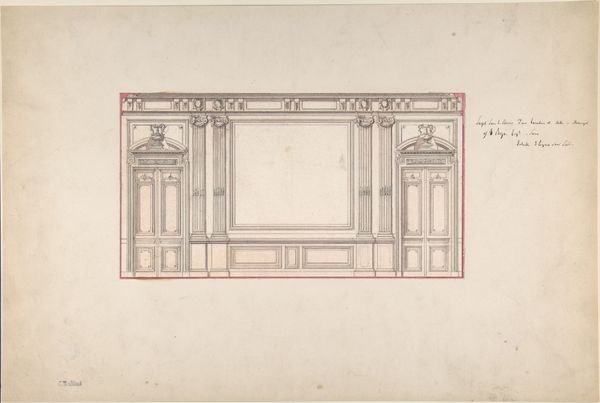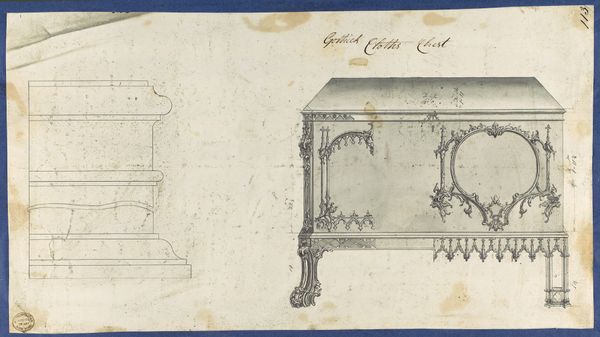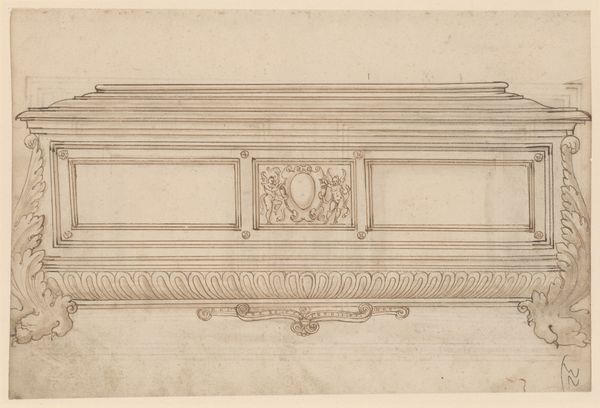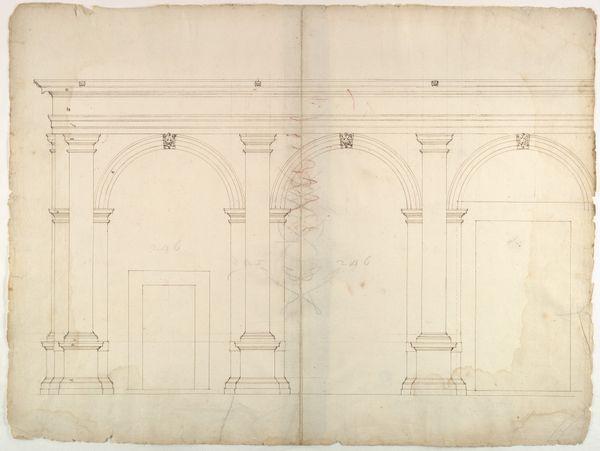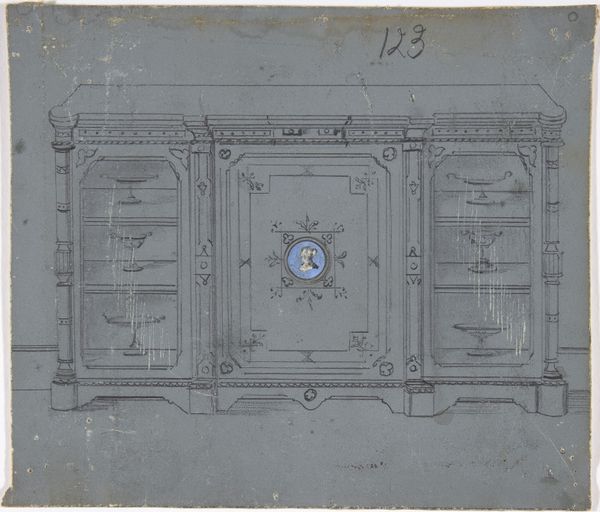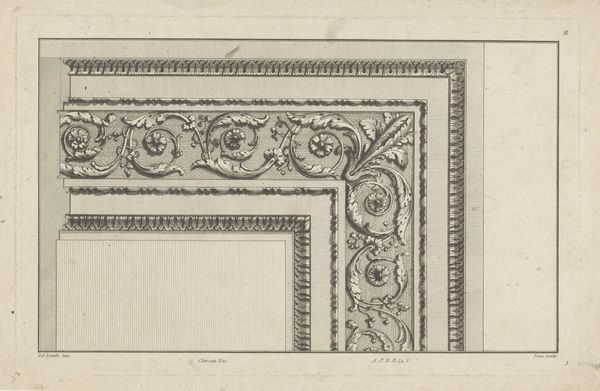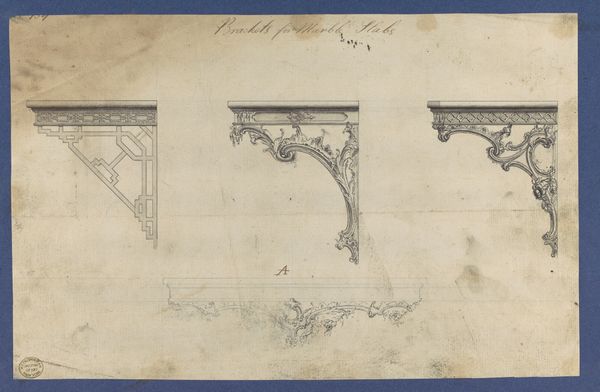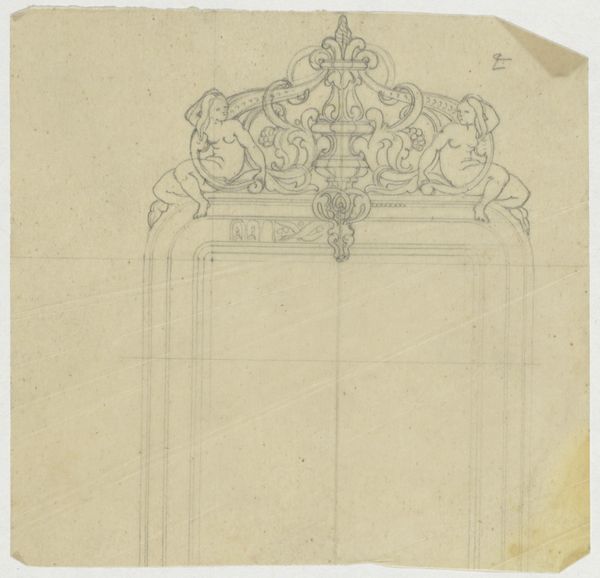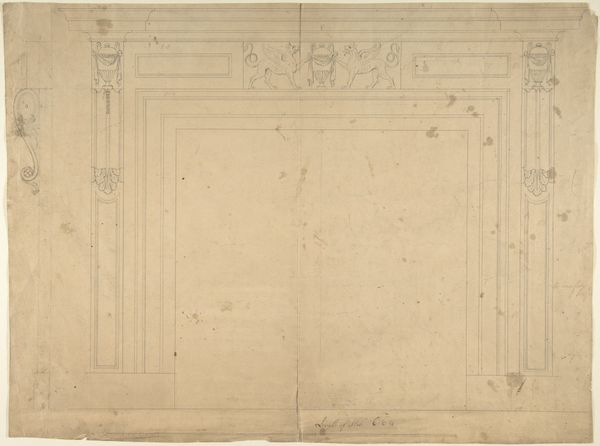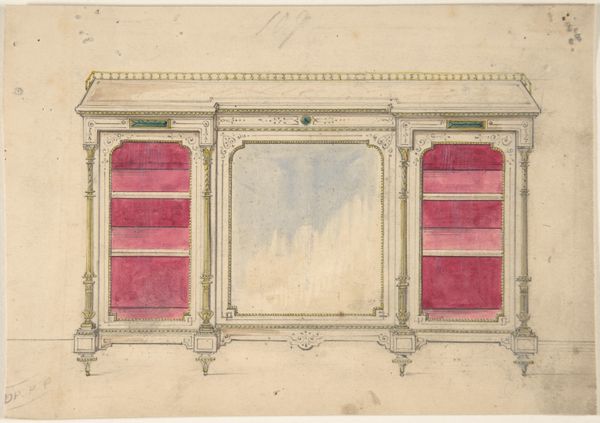
Library Table, from Chippendale Drawings, Vol. II 1757 - 1767
0:00
0:00
drawing, print, pencil, engraving, architecture
#
drawing
# print
#
geometric
#
pencil
#
decorative-art
#
engraving
#
architecture
Dimensions: sheet: 5 3/4 x 8 5/16 in. (14.5 x 21.1 cm)
Copyright: Public Domain
Editor: Here we have Thomas Chippendale's "Library Table, from Chippendale Drawings, Vol. II," created between 1757 and 1767. It’s a drawing, pencil and print engraving, so it looks very precise. The geometric shapes feel very balanced to me. What can you tell me about it? Curator: Chippendale's designs reveal so much about 18th-century British society and its complex relationship with global trade and evolving class structures. That Greek key pattern along the top and the stylized acanthus leaves point to the fascination with classical antiquity but were made affordable through mass production. How do you think that impacted society? Editor: Well, that makes things accessible. So more people can enjoy it and express themselves using the same styles? Curator: Precisely, yet consider the implications. The decorative arts became increasingly democratized, but this was occurring within the context of colonial expansion, and exploitative labor practices were also on the rise to supply the materials for mass consumption. Chippendale’s furniture wasn’t just about aesthetics; it reflected an increasingly intricate and fraught web of economic and social relationships that upheld colonial hierarchies and expanding ideas about capitalism. Where do you see this dynamic reflected in the design itself? Editor: I never thought about furniture in connection to colonial dynamics, but the drawing does have an understated opulence in those small floral engravings…It’s like, luxury carefully planned out and presented, for people who want that aesthetic? Curator: Indeed, and in what space, for what class, by what method was it produced? Understanding art in connection with politics reveals important, nuanced tensions about its beauty. Editor: So true! I’ll think of art in connection to broader history, thanks!
Comments
No comments
Be the first to comment and join the conversation on the ultimate creative platform.
